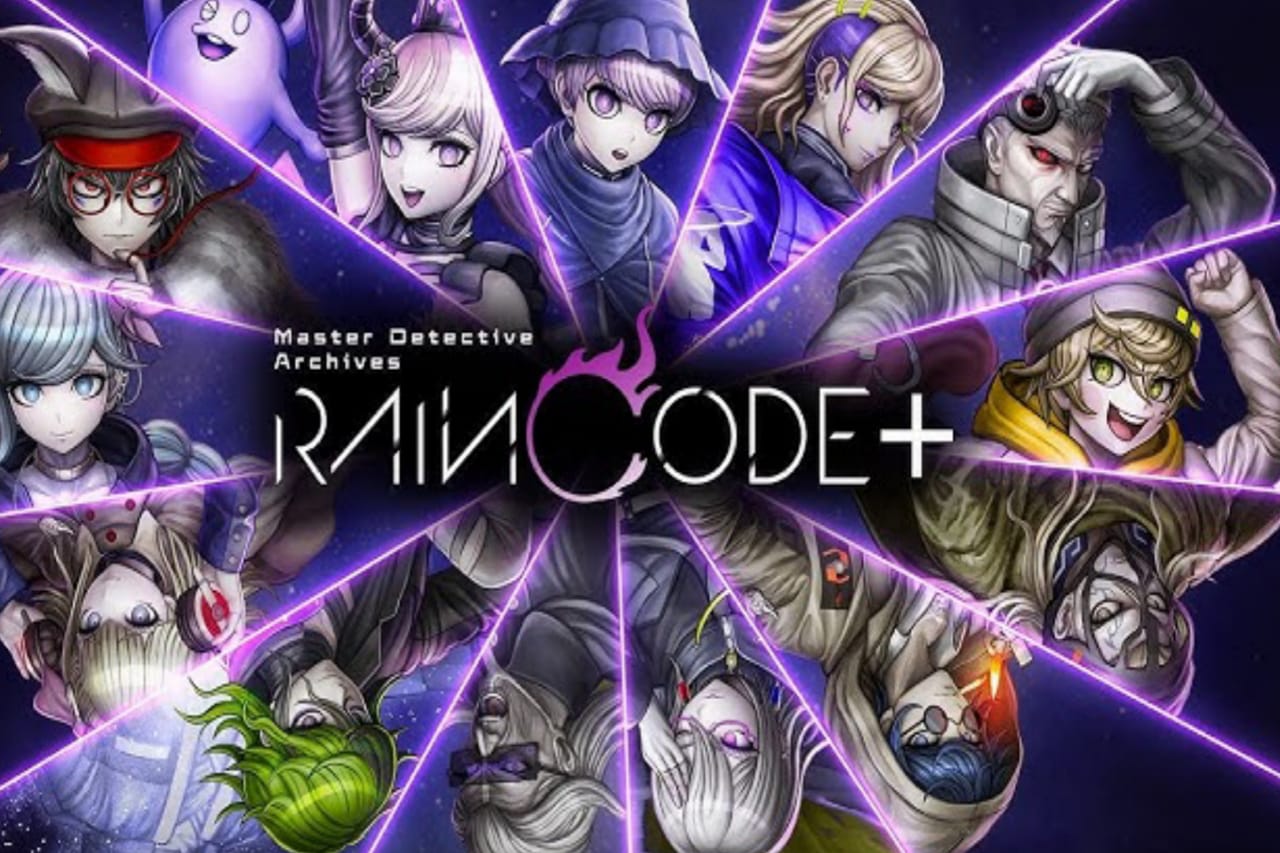Archives of the Master Detective: Rain Code Evaluation – Holding the Rain Responsible
Rain Code is an eccentric and peculiar mystery journey that struggles to emerge from the shadow of its predecessor, Danganronpa series.
I must give credit to Rain Code’s development team: They are highly proficient at defying your initial expectations. I was definitely prepared to be shocked and taken aback, knowing that these are the creators of the popular Danganronpa series, who are known for surprising players with unexpected twists in the story, but I was still caught off guard by what happened half an hour into the game. I felt like setting aside the Switch to offer a small round of applause. However, it is slightly disappointing, as none of the subsequent cases manage to achieve the same level of excellence, despite featuring some impressive moments. In summary, Rain Code falls short of the excellence of its predecessors.

Rain Code starts with a guy waking up in a storage space of some kind. The only thing he recalls is that his name is Yuma Kokohead, and he needs to board a train bound for Kanai Ward, a city controlled by the Amaterasu megacorp and the Peacekeeper force, secluded from the outside world in perpetual rain and neon-lit darkness. Shortly after getting on the train, he discovers the reason for his journey: he is a member of the World Detective Organization, and they are sending multiple agents to uncover the dark truths of Kanai Ward. He quickly learns the reason behind his amnesia: he had struck a deal with a deity of death to gain unique abilities, sacrificing his memories as part of the bargain.

Currently Showing: Preview of the character RAIN CODE in Master Detective Archives – Part of the World Detective Organization.
The Shinigami, a death god, usually appears as a small ghost visible only to Yuma. It perceives his thoughts and provides witty remarks until a puzzle arises, at which point Shinigami freezes time and changes into a voluptuous demon woman to take him to the intellectual realm of Mystery Labyrinths where things become chaotic. In this place, he has to face logic monsters, avoid deceitful false-solution traps, and open doors using Evidence Keys that are regurgitated by Shinigami in a colorful display. Perhaps breaking through mental barriers while riding Shinigami as a massive kaiju. And engage in a game of Pop-up Pirate with her inside a barrel at the beach. Yes, everything is just a bit strange.
The Rain Code development team, known for creating the popular Danganronpa adventure game series, has been praised for their influence on the character designs, music, and quirky character concepts in their games. However, the resemblances go beyond the surface: Rain Code’s gameplay structure is evidently inspired by those games. Each of the game’s six extended sections features a storyline-focused introduction, a killing, an inquiry, and a variety of mini-games to identify the offender. However, instead of a group trial overseen by a wicked bear-like creature, you are exploring a detective dungeon in another dimension. The Logic Deathmatch battles in the dungeons are basically a reimagining of Danganronpa’s Nonstop Debates, where you use a sword to expose falsehoods instead of a gun.
Yuma, who is training to be a detective and has amnesia, faces significant obstacles. Luckily, the rest of the WDO group consists of a diverse group of eccentric individuals with extreme personality traits. Each member possesses their own special supernatural power, such as detecting life forces, going back to a crime scene from the past, separating souls from bodies, or walking through solid walls. Yuma quickly discovers that he can pass on these unique abilities to the people who hold them, and they prove to be essential in the process of collecting information and proof during investigations. One instance is when Yuma utilizes the disguise skill of the irritating wannabe ladies’ man, Desuhiko, to sneak into a prestigious school where a dubious murder has taken place in the drama club. Having the opportunity to utilize these skills is a cool change, but the opportunities to experiment with them are few and far between.

Kanai Ward serves as the setting for all the sinister events in the game, being a crucial aspect with its damp, shadowy atmosphere, illuminated by neon lights, and filled with twisting paths. Great attention to detail has been given to the city’s art design and its different areas, with many chapters allowing time for players to freely explore and appreciate the diverse parts of the city while interacting with NPCs. Regrettably, that is the extent of what is available; there are no stores or things to do in this area. Engaging in extra missions to increase your Detective Rank and acquire useful skills in the Mystery Labyrinth skill tree is an option, but these quests are unimaginative and unremarkable, filled with typical fetch tasks and forgettable non-player character conversations, essentially serving as unnecessary filler.
On the other hand, the Mystery Labyrinths crafted by Shinigami at the end of every chapter are skillfully made, containing a variety of interesting surprises and amusing conversations among Yuma, Shinigami, and other characters caught up in the adventures.
Depicting a logical puzzle as a physical dungeon is a fun idea, giving artists and puzzle designers the opportunity to craft memorable traps, solutions, and transitional areas. Although the Switch may occasionally experience issues with unclear textures and decreased speed, the overall artistic style and diverse challenges and enemies that Yuma faces are commendable. There is also a wide range of challenges and riddles available. One moment, you’ll engage in a verbal battle against a Mystery Phantom who yells attacks, then you’ll solve crime scenes or participate in a QTE-style event to escape danger by answering a question swiftly. Next, face Shinigami in a rotating barrel, throw swords to form a phrase, and finally confront a huge Shinigami to break down mental barriers blocking the truth… and more. The mechanics in each of these parts are distinct yet simple to grasp, leading to dynamic gameplay that keeps you alert.
With its cool and wild character designs, Rain Code lacks sufficient character interaction for the audience to develop strong feelings of connection or animosity towards any character. Both allies and enemies usually have a dedicated section to display their skills and quirks, but are later demoted to minor roles. However, the majority of the in-game interactions involve only Yuma and Shinigami, who share a highly entertaining relationship. Discover little side stories involving other main characters by locating collectibles, but this will entail additional effort and won’t completely solve the problem.

The reason Rain Code doesn’t strike the same sweet spot as Danganronpa games is due to the insufficient character development and emotional attachment. The Danganronpa games were heavily focused on characters, creating a perpetually tense and emotional ambiance where your favorite character could be brutally murdered or, even worse, revealed to be a killer. The pervasive and powerful fear and certainty of loss made each moment feel heavy.
Rain Code lacks the identical level of stress and immediacy. The characters killed are not well-developed, the impact of the mega-corp’s unethical experiments is not fully felt, and some of the major plot twists fall short in their emotional impact. I also found that the conclusions of the Mystery Labyrinths, although enjoyable, seemed to be prolonged. In each game, I typically identified the who and how by halfway through, so all that was left was to determine how the game intended me to solve the puzzle. The outcome is a story-focused game with a narrative that lacks power in crucial moments, leaving players to wonder, “Is that all?” The conclusion that ties up loose ends too neatly in light of the chaotic revelations in the last chapter doesn’t improve the situation.
However, Rain Code is a decent detective adventure that captivates and keeps audiences entertained, although it doesn’t quite reach the exhilarating highs of Danganronpa. It has a captivating idea, engaging conversations, and a good amount of daring and eccentric oddness to keep a player engaged. I really hope this isn’t the final appearance of Shinigami’s excellent sarcasm.




Post Comment